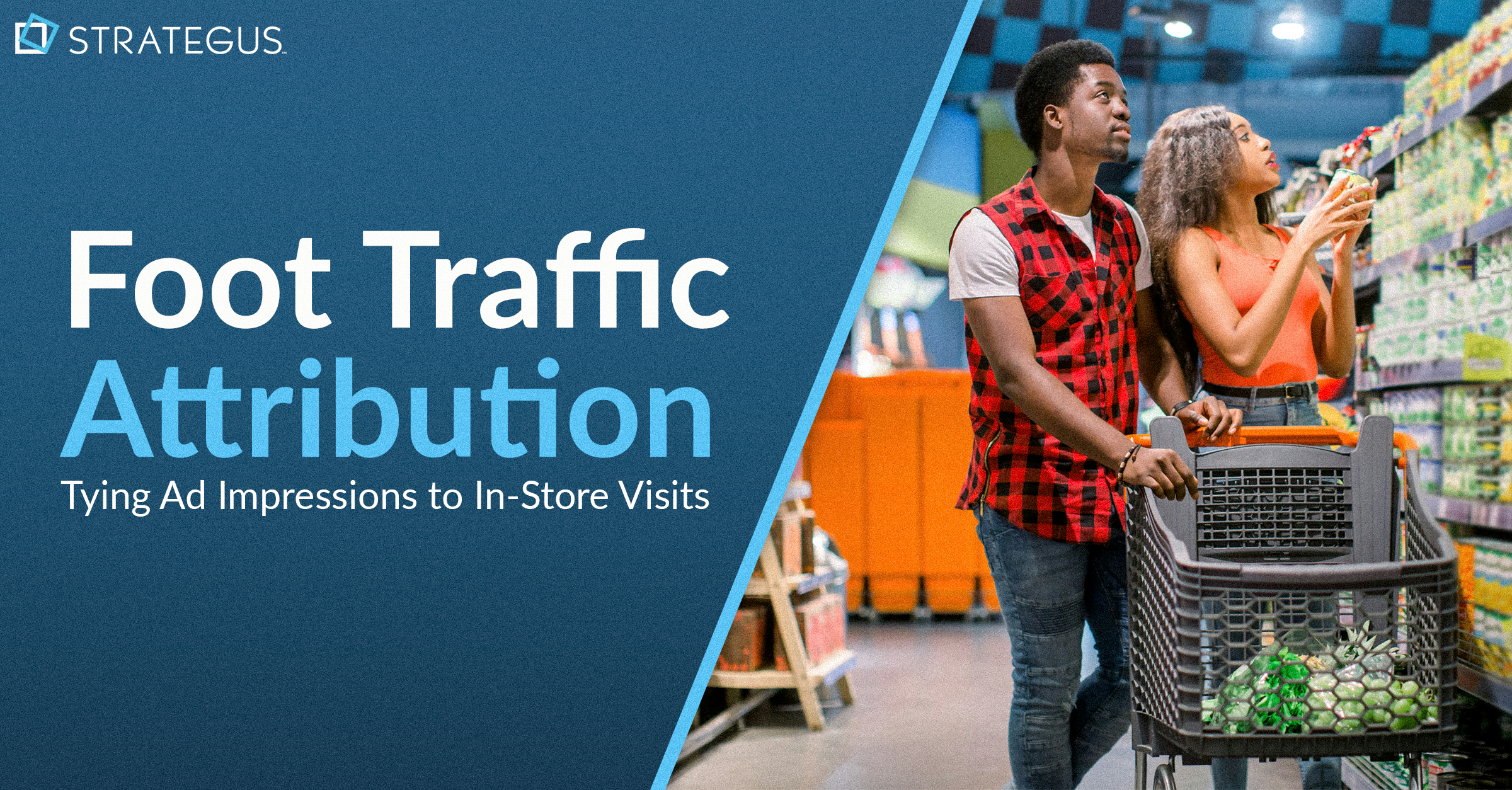- Home
- Company News
- CTV & OTT Advertising Interview Series [Part 1]
CTV & OTT Advertising Interview Series [Part 1]
 Andy Dixon
Andy Dixon
10 minutes read

There’s a lot happening in the connected TV (CTV) and over-the-top (OTT) advertising space, from innovations to acquisitions.
But there’s still a lot of confusion and questions about how fundamental advertising processes work, such as how CTV/OTT ads are bought, sold, and measured.
In part 1 of our CTV/OTT Advertising Interview Series, we interviewed leaders in this space to get answers to these questions and shed some light on the mechanics of CTV and OTT advertising.
Interviewees:
- Jeffrey Johnson — Senior Director, Strategic Accounts, CTV Platform at Verve Group
- Jeff Richardson —Senior Product Manager at Kochava
- Joel Cox — Co-Founder at Strategus
- Megan Sullivan-Jenks — Senior Director of Marketing & Communications at Choozle
- Paul Gubbins — VP, CTV Strategy at Publica
Table of Contents
- What Is Connected TV (CTV) And Over-The-Top (OTT) Advertising?
- How Does CTV and OTT Advertising Differ From Traditional TV?
- What Does the CTV/OTT Advertising Landscape Look Like?
- How Are CTV and OTT Ads Bought and Sold?
- What Type of Targeting Is Available for CTV & OTT Advertising and What Roles Does Contextual Targeting Play?
- What Role Does Data Play in the CTV and OTT Environment?
- How Are CTV/OTT Ads Measured?
- Why Is Supply-Path Optimization (SPO) Important for CTV & OTT?
What Is Connected TV (CTV) And Over-The-Top (OTT) Advertising?
The definition of connected TV (CTV) and over-the-top (OTT) advertising varies. The IAB Tech lab defines CTV as any device connected to the Internet that is used to view video content. Examples of CTV devices according to the IAB Tech Lab include smart TVs, game consoles like PlayStations and Xboxes, and streaming devices like Roku, Chromecast, Amazon Fire stick, and Apple TV.
However, the IAB Tech Lab doesn’t consider laptops, desktop computers, smartphones, and tablets as examples of CTV devices.
The IAB Tech Lab lists streaming services like Netflix, Roku, Hulu and Sling as examples of OTT video.
In September 2021, the Media Rating Council (MRC) announced its definition of CTV and OTT. Essentially, the MRC views CTV as a subset of OTT rather than as two separate categories.
However, the differences between what constitutes CTV and what doesn’t are similar to the IAB Tech Lab’s definition — i.e. CTV is reserved for Internet-enabled devices like smart TVs and non-CTV examples include laptops, desktop computers, smartphones and tablets.
How Does CTV and OTT Advertising Differ From Traditional TV?
With OTT and CTV advertising, you can reach further than with traditional linear television. The audience is made up of a younger, more tech-savvy cord-cutting segment. The increase of OTT and CTV viewership provides more significant ways for you to engage at the perfect time with your target audience. CTV and OTT marry together the precision of digital with the premium television experience users have come to expect.
Jeffrey Johnson
Senior Director, Strategic Accounts, CTV Platform at Verve Group
What Does the CTV/OTT Advertising Landscape Look Like?
The CTV/OTT advertising landscape is made up of connected TVs (CTVs) and devices, OTT streaming services, and AdTech companies.

How Are CTV and OTT Ads Bought and Sold?
CTV ads are bought and sold through the process of real-time bidding (RTB), which is an automated auction connecting buyers and sellers. Programmatic at its fundamental nature is the use of automation and data.
Thus, programmatic real-time bidding enables us to connect data for audience targeting with connected television ad inventory and attribution solutions. We’re seeing programmatic enable us to connect disparate data with inventory and ultimately provide a more valuable ad impression to the consumers and advertisers.
It is important to note that not all connected television (CTV) is purchased via programmatic real-time bidding. Some of it is still bought through direct relationships like on broadcast television.
Joel Cox
Co-Founder at Strategus
What Type of Targeting Is Available for CTV & OTT Advertising and What Roles Does Contextual Targeting Play?
As mentioned in the previous section, ads are purchased via direct or programmatic. However, they don’t allow for the same type of targeting. In fact, buying direct will generally provide access to a very limited demographic of the subscriber base. However, when connecting your campaign programmatically, you unlock almost every digital targeting option in a traditional digital ecosystem.
At Strategus, we believe that programmatic connected television can be encapsulated as the best of television, combined with the best digital for precision targeting and measurements. Therefore, when you transact a campaign automatically, you can capture any data points you would use in your mobile or desktop campaign and implement them into a household living room experience.
We’ve been designing campaigns not just with gender and interests (direct targeting) in mind but through automatic content recognition and location data. For instance, this functionality enables us to track consumers at a car dealership or a restaurant and connect their actions to active client campaigns via programmatic.
Historically, contextual targeting has often been used to assume adjacency for a brand. For example, one of the most well-known razor brands would often advertise its product during sports games. The logic behind that promotion was straightforward: men enjoy watching sports, men have beards, and they will need to shave, so let’s market our razor during sports games!
With this example in mind, we realize how often marketers and media buyers have overused contextual targeting in recent years as time has changed. Although sports tend to attract more men, it’s not exclusive to them. Therefore, contextual targeting has its limits and presents many flaws as humans don’t just sit in content categories to target.
Because connected television (CTV), when transacted programmatically, tells us who is on the other side of that screen, it does not matter if they are watching sports or watching a program that a marketer would never assume they are watching. The data enables us to target them based on numerous factors.
Joel Cox
Co-Founder at Strategus
What Role Does Data Play in the CTV and OTT Environment?
Data plays a very important role in CTV advertising. It is data that is enabling new advertisers to enter the TV advertising arena for the very first time. It is data that is enabling streaming publishers to grow their share of advertising budgets from traditional TV, social & display platforms.
However, the activation of 1st-party data as a practice is relatively new in CTV to some streaming publishers. GDPR & CCPA still apply in the CTV world so a new wave of consent management platforms (CMPs) have launched to help smart TV manufacturers and streaming apps that want to use viewers data to serve them targeted advertising to collect the appropriate consent.
Companies such as LiveRamp have created a robust 1st- and 3rd-party CTV data marketplace for the buy and sell side. Many publishers on the Publica platform have been quick to take advantage of the new LiveRamp CTV offering to increase the yield of their streaming deals via the activation of 1st-party data or the application of 3rd-party data to their PMPs.
Paul Gubbins
VP, CTV Strategy at Publica
Data is king in digital which brings CTV and OTT to the top of the food chain in the advertising ecosystem. That being said, CTV and OTT can run into issues such as not being able to match cookies back to IP addresses.
This can limit the scale of inventory for IP-based audience targeting. That leaves the door open for providers that have automatic content recognition (ACR) data to step in. ACR data can be sliced and diced in many different ways and used to target viewers who haven’t seen linear ads, resulting in a boost in reach.
In the same vein, advertisers can use the data to retarget a user who has seen a particular ad on linear television. Data will continue to play a pivotal role for marketers as they look to maximize outcomes from CTV as one of the main drivers of programmatic growth.
Jeffrey Johnson
Senior Director, Strategic Accounts, CTV Platform at Verve Group
How Are CTV/OTT Ads Measured?
Connected TV (CTV) and over-the-top (OTT) video ads are measured with some metrics we see on other channels—impressions, geolocation, CPM, etc.—along with others that can expand upon performance specific to CTV.
The first thing to understand is that CTV is an awareness-driven campaign. Based on the functionality of most CTV devices, conversions are not readily accessible. This is where a tool like cross-device tracking can show the value of the awareness created by a CTV campaign. By tracking users and the devices they use in their households, you are able to attribute CTV impressions to conversions that happen later.
Another metric to monitor is your win rate. A campaign’s win rate measures the number of impressions served out of those you bid on. This metric can determine if you are reaching enough of your target audience, if your spending is tracking with your budget, and if your base bids are high enough to win the impressions you need.
The metric that indicates your CTV campaign’s engagement is your video completion rate (VCR). The VCR indicates the number of times that a video plays to the end. This rate is ordinarily high for connected TV ads as there is not often a “skip video” functionality. But as different device types are added to a CTV campaign, VCR is liable to drop. To maximize your VCR, shop for the CTV deals and test which ad spots will yield the best results.
Finally, with CTV it’s important to avoid ad fatigue by monitoring ad frequency. If the audience you’re reaching is small, but your served impressions are still high, you could be oversaturating your audience with a message to the point where they stop engaging or resent your brand.
Megan Sullivan-Jenks
Senior Director of Marketing & Communications at Choozle
Why Is Supply-Path Optimization (SPO) Important for CTV & OTT?
When leveraging programmatic forms of advertising on OTT and CTV, supply-path optimization can help marketers narrow their ad spend to the specific publishers and or platform partners within the programmatic exchange that they want to prioritize and build longer term relationships with.
SPO enables the marketer to take back some of the control from programmatic algorithms and dictate the preferred supply path. SPO helps ensure brand safety, avoid unwanted overlap in your media mix, maximize efficiency, mitigate potential fraud, and more. Ask your programmatic OTT and CTV partners whether they offer SPO.
Jeff Richardson,
Senior Product Manager at Kochava

Andy Dixon is a seasoned Content Writing Specialist at Strategus, renowned for his expertise in creating engaging and impactful digital content. With over a decade of experience in content creation, Andy has honed his skills in a variety of niches, ranging from technology and marketing to education.
Strategus is a managed services connected TV(CTV) advertising agency with over 60,000+ campaigns delivered. Find out how our experts can extend your team and drive the result that matter most.
Talk to an Expert
Seeking a Custom CTV Strategy That Delivers?
What to read next
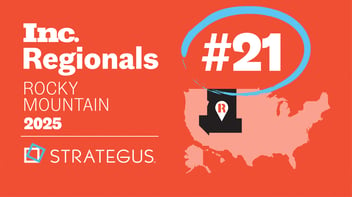
Strategus Ranked #21 on the 2025 Inc. Regionals: Rocky Mountain List of Fastest-Growing Private Companies
For the fourth year in a row, Strategusis proud to announce our recognition on the Inc. Magazine Regional list as one of the fastest-growing...
2 minutes read
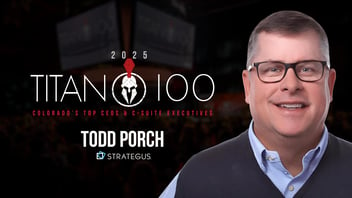
Todd Porch Named to the 2025 Colorado Titan 100
Denver, CO – March 18, 2025 – Titan CEO and headline sponsor Wipfli LLP are pleased to announce Todd Porch, CEO of Strategus, as a 2025 Colorado...
3 minutes read
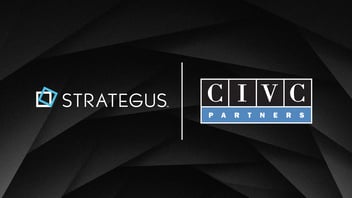
Strategus Announces Majority Investment from Private Equity Firm CIVC Partners
Investment will fuel continued growth of leading managed services provider of CTV advertising Todd Porch moves from President to CEO as company is...
3 minutes read
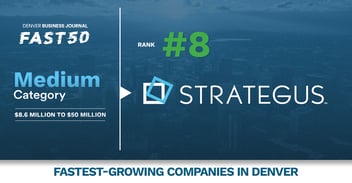
Strategus Named To Denver Business Journal Fast 50
DENVER – September 25, 2020 – The Denver Business Journal has named Strategus to its 2024 Fast 50 list of fastest-growing private companies in...
2 minutes read





